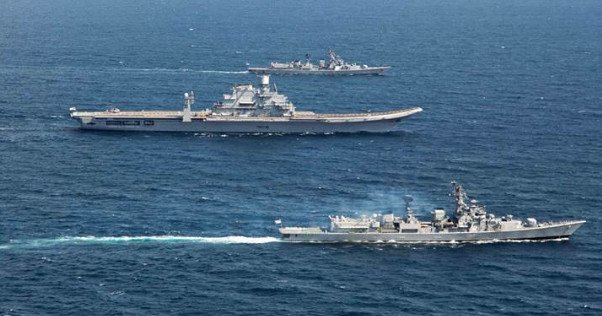Hindustani78
BANNED

- Joined
- Apr 8, 2014
- Messages
- 40,471
- Reaction score
- -47
- Country
- Location
http://zeenews.india.com/india/navy...torpedoes-for-kalvari-submarines_1969131.html
Senior Navy officials said that the new heavy weight torpedo will take some time to get finalised.
"There will be some alternate torpedoes as an interim solution. The heavy weight torpedoes will take some time. Those
which are already in use in other platform will be used in these (Kalvari class) submarines," said a senior Navy official.
Torpedoes are self-propelled weapons with explosives packed in their nose. They are a submarine's primary weapon to destroy their targets. The SUT torpedo is currently used in HDW Shishumar-class vessels are diesel-electric submarines.
The Black Hawk torpedoes were to be used in the Kalvari Class submarine. All six Kalvari class submarines are expected to be commissioned by 2020.
INS Kalvari, the first of the lot is likely to be commissioned before monsoon while the second submarine INS Khanderi could be commissioned by December this year or early next year.
Meanwhile, another submarine INS Sindhuraj will go to Russia for Medium Refit with Life Certification (MRLC) in mid- 2017, which will enhance its life for the next few year.
The submarine was inducted in the Indian navy in 1992. Another submarine INS Sindhukesri, which was commissioned in 1986, is undergoing a similar refit process.
The MRLC usually takes 27-30 months and this enhances submarine's life to 35-40 years.
First Published: Friday, January 20, 2017 - 21:17
Senior Navy officials said that the new heavy weight torpedo will take some time to get finalised.
"There will be some alternate torpedoes as an interim solution. The heavy weight torpedoes will take some time. Those
which are already in use in other platform will be used in these (Kalvari class) submarines," said a senior Navy official.
Torpedoes are self-propelled weapons with explosives packed in their nose. They are a submarine's primary weapon to destroy their targets. The SUT torpedo is currently used in HDW Shishumar-class vessels are diesel-electric submarines.
The Black Hawk torpedoes were to be used in the Kalvari Class submarine. All six Kalvari class submarines are expected to be commissioned by 2020.
INS Kalvari, the first of the lot is likely to be commissioned before monsoon while the second submarine INS Khanderi could be commissioned by December this year or early next year.
Meanwhile, another submarine INS Sindhuraj will go to Russia for Medium Refit with Life Certification (MRLC) in mid- 2017, which will enhance its life for the next few year.
The submarine was inducted in the Indian navy in 1992. Another submarine INS Sindhukesri, which was commissioned in 1986, is undergoing a similar refit process.
The MRLC usually takes 27-30 months and this enhances submarine's life to 35-40 years.
First Published: Friday, January 20, 2017 - 21:17











